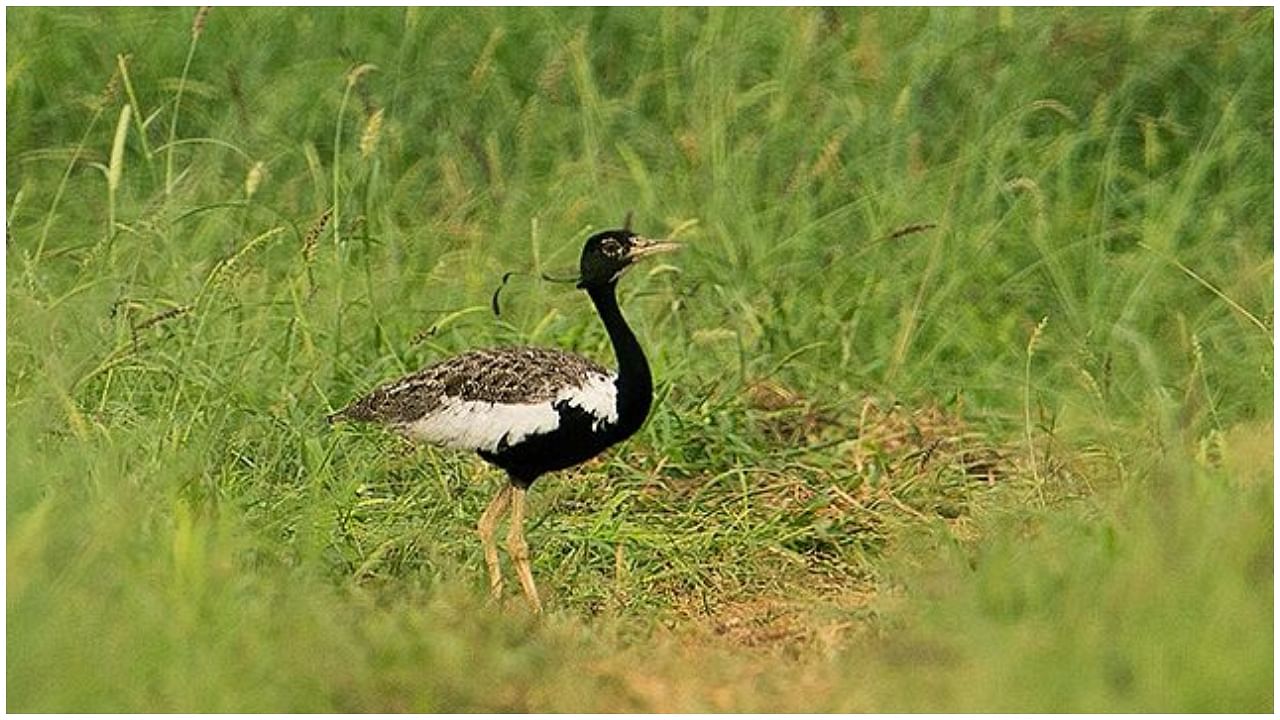
The smallest of the bustard family, Lesser Florican, which is known for its spectacular leaping breeding display, faces severe threat.
The bird is found only in India and on the verge of extinction.
There are myriad reasons acting as causes behind extinction. Some of them are habitat loss, degradation, and fragmentation with the expansion of the renewable energy sector (impact especially due to collision with high-tension power lines); mining, intensive agriculture, cattle overgrazing, free-ranging dogs, invasion by exotic plants etc.
The Mumbai-headquartered Bombay Natural History Society (BNHS) is working extensively to pull these birds out of extinction.
“Lesser Florican is the smallest bird of the bustard family which was formerly a common game bird of Indian grasslands. But now with a global population of 250-300 males confined in the states of Madhya Pradesh, Gujarat, Maharashtra, Karnataka, Telangana, Andhra Pradesh, and Rajasthan with an IUCN status of CR (Critically Endangered). The Ajmer landscape of Rajasthan is one of the last remaining breeding grounds where it is surviving in a human-dominated landscape,” said Kishor Rithe, Honorary Secretary and Interim Director, BNHS.
“While sighting records during non-breeding season are available from other semi-arid regions of the country. It is found in a semi-arid region, mainly dominated by xerophytes; thorny trees, patchy grasslands, and human-dominated agricultural fields,” said Sujit Narwade, Assistant Director, BNHS.
According to him, the current global population of Lesser Florcians is 250-300 males and declining.
Velavadar Blackbuck National Park, Bhavnagar district, Gujarat and Shokaliya landscape of Rajasthan (Nasirabad, Bhinai, Tantoti, Kekri, Sarwar tehsils in Ajmer district; Malpura tehsil of Tonk district; Gulabpura and Shahpura tehsils of Bhilwara district) emerged as the strongholds of the species with more than 80% of the global population.
Since Velavadar Blackbuck National Park is a Protected Area, there are comparatively less threats to the species than in Shokaliya landscape, where it survives in human-dominated landscape.
BNHS initiated developing a micro-level planning for the conservation of Lesser Florican and its habitats that are under immense pressure from mining and intensive agricultural activities in Ajmer, Rajasthan.
During the non-breeding season, Lesser Florican can be seen up to over 1,000 km away from breeding sites in drier parts of Karnataka, Maharashtra, Telangana, and Andhra Pradesh.
BNHS is visiting nearby areas in western Madhya Pradesh State (Cheeta Kheda, Neemuch; Sailana, Ratlam; Sardarpur, Dhar and Petlawad, Jhabua) to understand the status of birds and their habitat. Additionally in 2021, BNHS started working under the project titled “Developing strategies for the conservation of the last remaining population of Lesser Florican in Deccan, Bidar district, Karnataka.”
In 2022, BNHS conducted a landscape survey for Lesser Florican in parts of Maharashtra, Karnataka, Andhra Pradesh, and reports are under progress. Lesser Florican has been In Maharashtra. Lesser Florican has been recorded from Solapur city outskirts, Aurangabad city outskirts, Chandrapur (Tadoba and Warora), Gadchiroli, Washim and Akola areas in Maharashtra during the last few years.